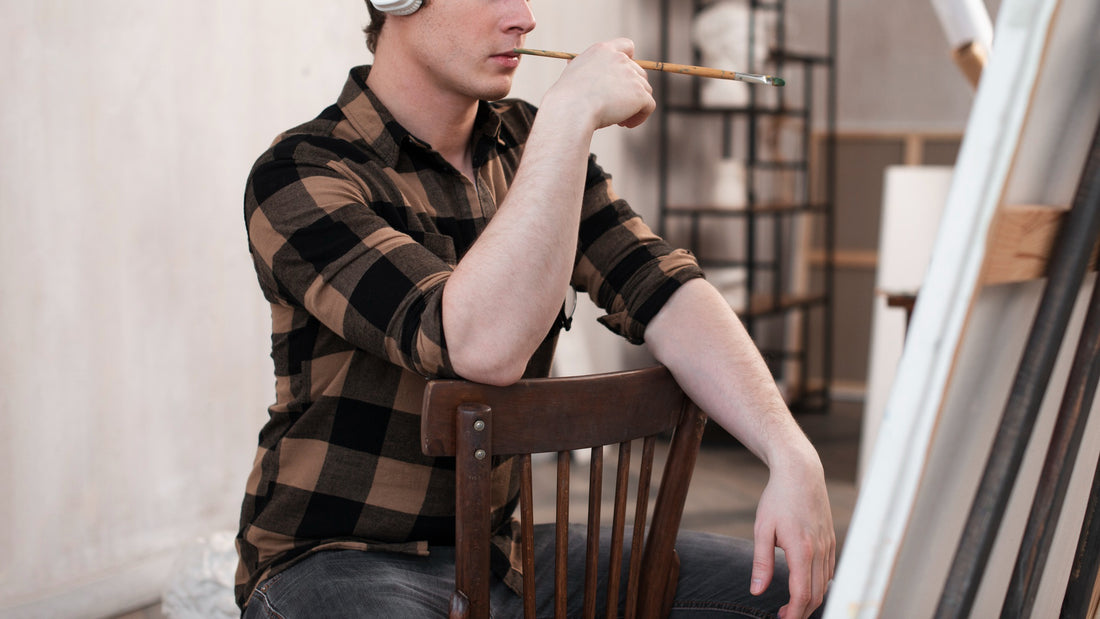
So beheben Sie häufige Fehler beim Malen nach Zahlen
Aktie
Malen nach Zahlen kann ein entspannendes und lohnendes Hobby sein, mit dem Sie mit Präzision und Leichtigkeit wunderschöne Kunstwerke schaffen können. Allerdings können selbst die erfahrensten Maler von Zeit zu Zeit Fehler machen. Ob Sie nun versehentlich außerhalb der Linien malen, die falsche Farbe verwenden oder zu viel Farbe auftragen, es ist wichtig zu wissen, wie Sie diese Fehler effektiv korrigieren können, ohne sich entmutigt zu fühlen.
Nachfolgend finden Sie einige der häufigsten Fehler beim Malen nach Zahlen sowie einige praktische Tipps zur Korrektur dieser Fehler, sodass Sie gut vorbereitet sind, wenn Ihnen das nächste Mal versehentlich ein Fehler beim Malen nach Zahlen unterläuft.
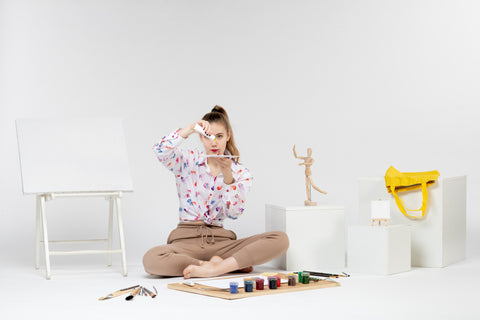
Häufige Fehler beim Malen nach Zahlen
0.1 Malen außerhalb der Linien
Einer der häufigsten Fehler beim Malen nach Zahlen ist das Übermalen der vorgegebenen Linien. Ob es nun daran liegt, dass der Pinsel abrutscht oder Sie kurzzeitig unkonzentriert sind, es kann frustrierend sein, wenn Ihr Kunstwerk durch verirrte Pinselstriche verunstaltet wird.
0.2 Verwendung der falschen Farbe
Ein weiterer häufiger Fehler ist die Verwendung der falschen Farbe in einem bestimmten nummerierten Abschnitt. Dies kann passieren, wenn die Farben im Kit ähnlich sind oder wenn Sie den Farbschlüssel versehentlich falsch interpretieren.
0.3 Zu viel oder zu wenig Farbe auftragen
Die richtige Menge Farbe auf Ihrem Pinsel ist entscheidend, um die gewünschte Textur und das gewünschte Aussehen Ihres Gemäldes zu erhalten. Wenn Sie zu viel Farbe auftragen, kann dies zu einem unordentlichen und ungleichmäßigen Ergebnis führen, während zu wenig Farbe fleckige und unvollständige Bereiche erzeugen kann.
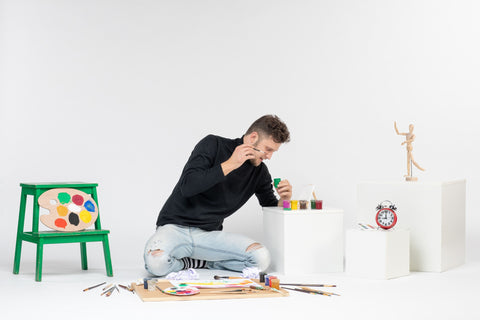
So korrigieren Sie Fehler beim Malen nach Zahlen
1.1 Korrigieren eines Fehlstrichs
Wenn Sie versehentlich außerhalb der Linien malen oder einen Strich im falschen Bereich machen, geraten Sie nicht in Panik. Hier sind einige Möglichkeiten, diesen Fehler zu korrigieren:
- Mischtechnik: Verblenden Sie den falsch gesetzten Strich vorsichtig mit einem kleinen Pinsel oder einem Wattestäbchen mit den umgebenden Farben. Dadurch wird der Fehler kaschiert und ein nahtloser Übergang geschaffen.
- Schabtechnik: Verwenden Sie einen Zahnstocher oder eine Rasierklinge, um die verrutschte Farbe vorsichtig abzukratzen. Gehen Sie dabei vorsichtig vor, um die darunter liegenden Farbschichten oder die Leinwand nicht zu beschädigen. Nach dem Entfernen können Sie den Bereich dann wieder richtig bemalen.
- Abdecktechnik: Wenn der Fehler geringfügig ist, können Sie ihn abdecken, indem Sie die richtige Farbe über den falsch gesetzten Strich auftragen. Achten Sie darauf, dass die Farbe übereinstimmt und nahtlos mit den umliegenden Bereichen verschmilzt.
1.2 Korrigieren einer falschen Farbe
Die Verwendung der falschen Farbe in einem nummerierten Abschnitt kann frustrierend sein. Hier sind jedoch einige Methoden zum Korrigieren dieses Fehlers:
- Waschtechnik: Wenn die falsche Farbe noch feucht ist, können Sie versuchen, sie mit einer feuchten Bürste, einem Schwamm oder einem Wattestäbchen abzuwaschen. Tupfen Sie die Stelle sanft ab, bis die Farbe verblasst, und tupfen Sie die überschüssige Feuchtigkeit dann vorsichtig mit einem sauberen Tuch ab. Nach dem Trocknen können Sie die richtige Farbe erneut auftragen.
- Schichttechnik: Wenn die falsche Farbe getrocknet ist, können Sie die richtige Farbe darüber auftragen. Beginnen Sie mit einer dünnen Schicht der richtigen Farbe und steigern Sie die Intensität allmählich, bis sie zu den umliegenden Bereichen passt. Denken Sie daran, jede Schicht trocknen zu lassen, bevor Sie eine weitere auftragen.
- Farbmischtechnik: In manchen Fällen können Sie die falsche Farbe mit der richtigen Farbe mischen, um einen neuen Farbton zu erzeugen. Experimentieren Sie mit dem Mischen der beiden Farben auf Ihrer Palette, bis Sie eine passende Übereinstimmung erzielen.
1.3 Einstellen der Farbmenge
Wenn Sie zu viel oder zu wenig Farbe auftragen, kann dies das Gesamtbild Ihres Gemäldes beeinträchtigen. So passen Sie die Farbmenge an:
- Überschüssige Farbe entfernen: Wenn Sie zu viel Farbe aufgetragen haben, tupfen Sie den Überschuss vorsichtig mit einem sauberen Tuch oder Papiertuch ab. Achten Sie darauf, die umliegenden Bereiche nicht zu verschmieren.
- Nachstreichen: Wenn Sie zu wenig Farbe verwendet haben und die Fläche fleckig oder unvollständig wirkt, tragen Sie einfach mehr Farbe auf, um die gewünschte Deckung zu erreichen. Lassen Sie sich Zeit und achten Sie darauf, dass die neu aufgetragene Farbe sich nahtlos mit den vorhandenen Schichten verbindet.
Mit diesen Techniken können Sie Fehler beim Malen nach Zahlen effektiv korrigieren und die Integrität Ihres Kunstwerks wiederherstellen. Denken Sie daran: Übung macht den Meister. Scheuen Sie sich nicht, zu experimentieren und aus Ihren Fehlern zu lernen. Obwohl es wichtig ist, zu wissen, wie man Fehler korrigiert, ist es noch besser, sie von vornherein zu vermeiden.
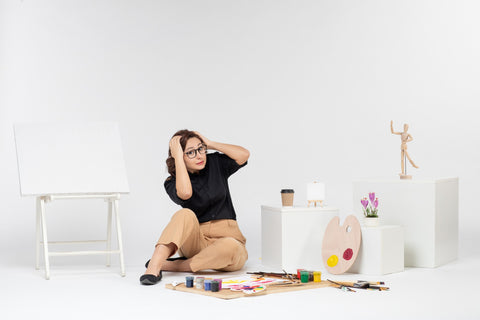
Fehler beim Malen nach Zahlen vermeiden
Durch proaktives Vorgehen und die Umsetzung bestimmter Strategien können Sie das Auftreten von Fehlern beim Malen nach Zahlen minimieren. In diesem Abschnitt finden Sie verschiedene Tipps, die Ihnen dabei helfen, Fehler zu vermeiden und ein reibungsloses Malerlebnis zu gewährleisten.
2.1 Geduld üben
Eine der Hauptursachen für Fehler beim Malen nach Zahlen ist, dass man den Vorgang überstürzt. Ungeduld kann zu unvorsichtigen Pinselstrichen und ungenauem Farbauftrag führen. Um dies zu verhindern, üben Sie Geduld und lassen Sie sich bei jedem Schritt Zeit. Lassen Sie die Farbe trocknen, bevor Sie mit dem nächsten Abschnitt fortfahren, und konzentrieren Sie sich darauf, eine ruhige Hand und einen ruhigen Geisteszustand beizubehalten.
2.2 Verwenden einer Lupe
Manchmal sind die nummerierten Abschnitte in einem Malen-nach-Zahlen-Set recht klein, sodass es schwierig ist, die Details klar zu erkennen. Mithilfe einer Lupe können Sie die Zahlen und Linien deutlicher erkennen und so die Wahrscheinlichkeit verringern, dass Sie im falschen Abschnitt malen. Investieren Sie in eine hochwertige Lupe, die eine klare und vergrößerte Sicht auf die Leinwand bietet.
2.3 Einen sauberen Arbeitsplatz aufrechterhalten
Ein überfüllter und chaotischer Arbeitsplatz kann zu Verwirrung und Fehlern führen. Halten Sie Ihren Malbereich organisiert und aufgeräumt, indem Sie unnötige Gegenstände wegräumen und sicherstellen, dass Sie genügend Platz haben, um bequem arbeiten zu können. So bleiben Sie konzentriert und vermeiden, dass Sie versehentlich Farben verwechseln oder Ihren Pinsel verlegen.
2.4 Überprüfen der Farben vor der Anwendung
Bevor Sie die Farbe auf die Leinwand auftragen, müssen Sie unbedingt die verwendete Farbe noch einmal überprüfen. Sehen Sie in der Farblegende nach und vergleichen Sie sie mit der Farbe auf Ihrer Palette oder in den Farbtöpfen. Dieser Schritt trägt dazu bei, die Wahrscheinlichkeit zu minimieren, dass Sie die falsche Farbe verwenden.
2.5 Die richtige Pinselpflege
Die Pflege Ihrer Pinsel ist für die Erhaltung ihrer Qualität unerlässlich. Reinigen Sie Ihre Pinsel nach jedem Malvorgang gründlich, um Farbreste zu entfernen. Achten Sie außerdem darauf, für jeden Abschnitt die richtige Pinselgröße und -art zu verwenden, um einen präzisen und genauen Auftrag zu gewährleisten.
Durch die Umsetzung dieser vorbeugenden Maßnahmen können Sie die Wahrscheinlichkeit von Fehlern beim Malen nach Zahlen erheblich verringern. Wenn jedoch Fehler auftreten, denken Sie daran, dass sie eine Chance für Wachstum und Lernen darstellen. Lassen Sie uns untersuchen, wie Sie Ihre Fehler in künstlerische Möglichkeiten verwandeln können.
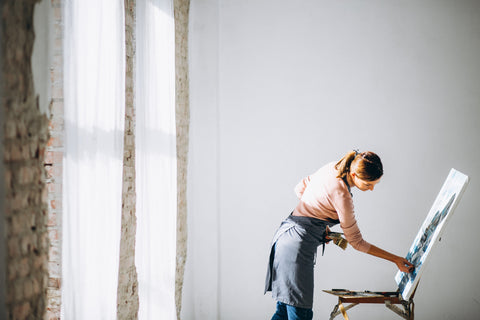
So machen Sie das Beste aus Ihren Fehlern
Fehler sind ein unvermeidlicher Teil jedes kreativen Prozesses, auch beim Malen nach Zahlen. Anstatt Fehler jedoch als Misserfolge zu betrachten, können Sie sie als Chancen für Wachstum und künstlerische Erkundung nutzen.
3.1 Aus Fehlern lernen
Jeder Fehler ist eine wertvolle Lektion. Nehmen Sie sich die Zeit, Ihre Fehler zu analysieren und herauszufinden, warum sie passiert sind. War es das Ergebnis von Eile, mangelnder Konzentration oder mangelnder Vertrautheit mit einer bestimmten Technik? Wenn Sie die Grundursache identifizieren, können Sie aus Ihren Fehlern lernen und Ihre zukünftige Vorgehensweise anpassen. Nutzen Sie jeden Fehler als Sprungbrett zur Verbesserung und Verfeinerung Ihrer Malfähigkeiten.
3.2 Fehler in künstlerische Chancen verwandeln
Manchmal können Fehler zu unerwarteten und interessanten künstlerischen Ergebnissen führen. Akzeptieren Sie die zufälligen Pinselstriche oder Farbabweichungen und prüfen Sie, ob sie in Ihr Gemälde integriert werden können. Experimentieren Sie mit verschiedenen Techniken, um den Fehler zu verwischen oder zu verbessern und ihn in ein einzigartiges Merkmal Ihres Kunstwerks zu verwandeln. Denken Sie daran, dass Kunst subjektiv ist und was Ihnen wie ein Fehler erscheinen mag, von anderen als kreative Entscheidung angesehen werden könnte.
3.3 Fehler nutzen, um neue Techniken zu entwickeln
Fehler können auch ein Katalysator für die Entdeckung neuer künstlerischer Techniken sein. Wenn Sie versuchen, einen Fehler zu korrigieren, stoßen Sie möglicherweise auf eine neue Art, Farbe aufzutragen, Farben zu mischen oder Texturen zu erstellen. Nehmen Sie diese Entdeckungen an und integrieren Sie sie in Ihre zukünftigen Kunstwerke. Indem Sie Grenzen überschreiten und experimentieren, können Sie einen einzigartigen künstlerischen Stil entwickeln, der Ihre Gemälde von anderen abhebt.
3.4 Unterstützung und Feedback einholen
Scheuen Sie sich nicht, Unterstützung und Feedback von anderen Künstlern oder Kunstgemeinschaften zu suchen. Teilen Sie Ihre Fehler mit und bitten Sie um Vorschläge, wie Sie diese beheben oder in Ihr Kunstwerk integrieren können. Der Austausch mit anderen, die Ihre Leidenschaft teilen, kann wertvolle Erkenntnisse und Ermutigung liefern und Ihnen helfen, als Künstler zu wachsen.
Zusammenfassung
Fehler beim Malen nach Zahlen sind ein normaler Teil des kreativen Prozesses. Es ist jedoch wichtig, diese Fehler mit einer positiven Einstellung anzugehen und sie als Chancen für Wachstum und künstlerische Entwicklung zu nutzen. Wenn Sie die Grundlagen des Malens nach Zahlen verstehen, häufige Fehler erkennen und lernen, wie Sie diese korrigieren können, können Sie Ihre Malfähigkeiten verbessern und wunderschöne Kunstwerke schaffen.
Denken Sie daran, Geduld zu üben, eine Lupe zu verwenden, um Details deutlich zu erkennen, einen sauberen Arbeitsplatz zu haben und die Farben vor dem Auftragen noch einmal zu überprüfen, um Fehler zu vermeiden. Wenn Fehler passieren, lassen Sie sich nicht entmutigen. Lernen Sie stattdessen daraus, verwandeln Sie sie in künstlerische Möglichkeiten und begrüßen Sie die unerwarteten Ergebnisse, die sie mit sich bringen können. Suchen Sie Unterstützung und Feedback von anderen Künstlern, um wertvolle Erkenntnisse und Ermutigung zu gewinnen.
Letztendlich ist Malen nach Zahlen eine Reise, auf der Sie Ihrer Kreativität Ausdruck verleihen und den Prozess des Kunstschaffens genießen können. Akzeptieren Sie die Unvollkommenheiten, lernen Sie aus Ihren Fehlern und lassen Sie sich von ihnen zu neuen Techniken und künstlerischen Entdeckungen führen. Mit jedem Gemälde wachsen Sie als Künstler und entwickeln Ihren einzigartigen Stil.
Viel Spaß beim Malen!
